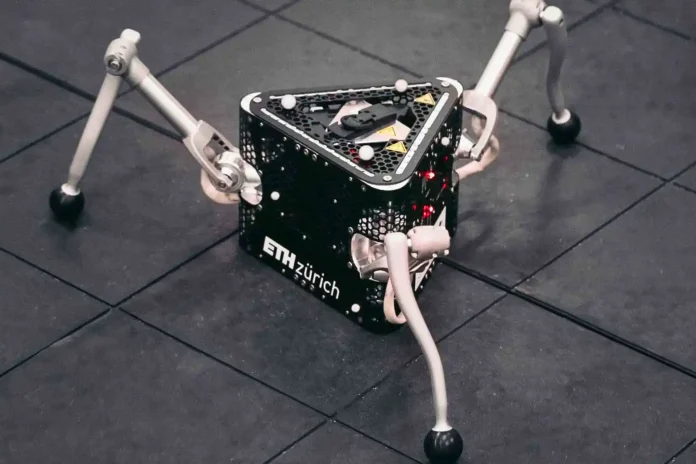For decades, scientists have dreamt of sending robots to explore asteroids, celestial bodies rich in resources that could be vital for future space exploration. However, the rough environment of space, particularly the zero gravity on asteroids, poses challenges for traditional wheeled rovers. This is why SpaceHopper Robot is designed, a revolutionary new robot that uses a hopping motion to navigate the unforgiving surface of asteroids.
Challenge of Low Gravity
Asteroids and other small celestial bodies have low gravity compared to Earth. This low-gravity environment, also known as microgravity, limits the effectiveness of traditional wheeled rovers commonly used on Mars. Here’s why:
- Wheels struggle to gain traction on the loose regolith (loose, rocky material) that covers most asteroids. This lack of grip makes it difficult for wheeled rovers to move efficiently or climb slopes.
- The low gravity makes it challenging for wheeled rovers to make sharp turns or navigate uneven soil.
- The combination of limited traction and uneven surfaces increases the risk of rovers tipping over and becoming inoperable.
SpaceHopper Robot’s Unique Design
ETH Zurich students created the SpaceHopper robot to tackle low-gravity exploration challenges. Unlike traditional rovers, SpaceHopper utilizes a hopping motion to propel itself across the asteroid’s surface.
SpaceHopper features a lightweight, triangular body with three articulated legs. This design provides stability during landing and guiding. Each leg has a knee and hip joint, allowing the robot to push off the surface and propel itself forward in a series of controlled jumps. It is fitted with advanced sensors and software that calculate the optimal jump force for each hop. This ensures efficient movement and minimizes the risk of tipping over.
Testing the Limits of SpaceHopper
The SpaceHopper project has undergone rigorous testing to validate its design and capabilities. In a huge milestone, the robot completed a series of test jumps inside a parabolic flight aircraft, simulating the low-gravity environment of an asteroid.
“A small three-legged robot has successfully learned to move in zero gravity,” said Dr Per Morten Jorgensen, a researcher involved in the project, in a press release from ETH Zurich. “This is a significant step forward for future asteroid exploration missions.” The success of these tests suggests further development and potential deployment of SpaceHopper on actual asteroid missions.
The SpaceHopper’s applicability goes beyond its unique hopping movement. Its compact size allows for launch on smaller rockets, reaching more asteroids. Hopping provides access to difficult terrain like craters, giving scientists a complete picture of the asteroid’s surface. The design could also be adapted for other low-gravity environments like comets or Martian moons.
Also Check: Proof of Mysterious White Rocks on Mars Puzzles Scientists
Why Asteroids Matter
While SpaceHopper represents a leap forward in asteroid exploration technology, future missions will likely involve a combination of technologies. Traditional rovers may still be valuable for traversing flat, smooth surfaces, while robots like SpaceHopper can handle more challenging and uneven surfaces.
“We envision a future where different types of robots work together to explore asteroids,” said Dr. Jorgensen. “SpaceHopper could be a valuable tool in our toolbox for unlocking the secrets of these fascinating celestial bodies.”
Asteroids are the residue left from the formation of our solar system and are believed to contain a wealth of resources, including precious metals, water, ice, and organic materials. These resources could be necessary for future space exploration, serving as refueling stations for deep space travel or even providing the materials needed to establish permanent outposts on the Moon or Mars.
The successful development of robots like the SpaceHopper robot brings us closer to unlocking the potential of asteroids. It paves the way for a future where these celestial bodies are no longer simply distant specks in the night sky but valuable resources waiting to be explored.



